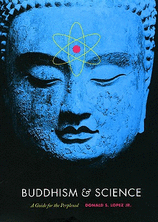 Scott applied the “Page 99 Test” to their new book, The Philosophers' Quarrel: Rousseau, Hume, and the Limits of Human Understanding, and reported the following:
Scott applied the “Page 99 Test” to their new book, The Philosophers' Quarrel: Rousseau, Hume, and the Limits of Human Understanding, and reported the following:P. 99 happens to contain one of the main events in our chronicle of the rise and fall of the friendship between Jean-Jacques Rousseau and David Hume. Namely, it is on this page that Rousseau's friends, anxious to find him an asylum after he has been chased from his most recent place of exile, suggest Hume as a potential protector. The suggestion is made by several of their mutual friends, but the request is made by the comtesse de Boufflers. Hume had fallen in love with the countess during his stay in Paris over the past several years as part of the British ambassadorial staff. When Boufflers contacts him about Rousseau, Hume eagerly agrees to come to his rescue, despite never having met the man. "I assure your Ladyship," he replied to Boufflers' request, "there is no man in Europe of whom I have entertained a higher idea, and whom I would be prouder to serve." Their brief friendship began a few months after this letter, when they met in Paris before traveling together to England, and it would end only a few months later with bitter recriminations in a very public falling out.Read an excerpt from The Philosophers' Quarrel, and learn more about the book at the Yale University Press website.
--Marshal Zeringue
























